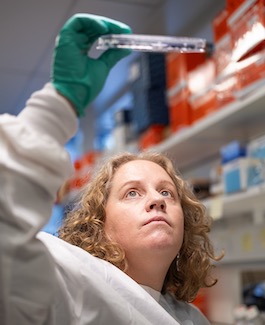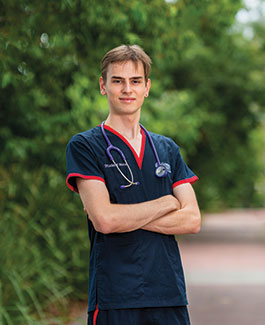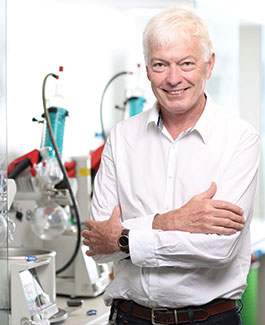Using nasal stem cells to find new ways to treat spinal cord injury
A few years ago, it was a dream, but there is now evidence that spinal cords can regenerate following severe injuries. That means new hope for an estimated 250,000 to 500,000 people globally who suffer from spinal cord injury.
In Australia alone, the lifetime cost of care and lost economic activity for someone with quadriplegia is $9M and the total current cost to the community for all spinal cord injuries exceeds $2B annually. Finding a therapy would give people back their independence and save the community enormous costs.
We are now on the verge of a human Phase 1 clinical trial for treating chronic spinal cord injury
Prof James St John
The Clem Jones Centre for Neurobiology and Stem Cell Research is a dedicated research hub within the Griffith Institute for Drug Discovery, it aims to develop therapies to treat acquired brain and spinal cord injury.
Led by Professor James St John, researchers follow an approach that transplants cells from the nose into injured spinal cords to form a cellular bridge, enabling the regeneration of nerve cells to make functional motor and sensory connections.
“The research team has created a world-first cellular nerve bridge technology which has already received two major national awards, the NHMRC Marshall and Warren Innovation Award and a Research Australia Discovery Award,” he said.
“This innovative technology enables the rapid generation of cellular nerve bridges which can be easily handled by surgeons for transplantation to treat spinal cord injury.”
Opened by the Queensland Premier Annastacia Palaszcuk in 2016, the Centre’s major funders include the Clem Jones Group ($2.4M) and Perry Cross Spinal Research Foundation ($2M). In 2017, the Queensland Government provided $5M towards further research.
In 2023, the Motor Accident Insurance Commission (MAIC) boosted the team’s research with an additional $5.4M in funding, bringing their total investment up to more than $16M to develop spinal cord injury therapies.
“This latest round of funding will allow the research team to expand the nerve bridge technology to a wider range of nervous system injuries including peripheral nerve and brain injuries,” said Professor St John.
“We are now on the verge of a human Phase 1 clinical trial for treating chronic spinal cord injury, and through the ongoing support of MAIC we are delighted we have been able to deliver it right here in Queensland.”
The Clem Jones Centre team has successfully demonstrated the efficacy of the nerve bridges for treating spinal cord injury in preclinical models.
Professor James St John said the funding has enabled the team of more than 30 researchers to rapidly create, test and improve incredible technologies that were just a dream a few years ago.
More than $100 million of philanthropy has already been secured to create a brighter future for all.
Read more impact stories

Working towards eradicating malaria with a new vaccine
Dr Danielle Stanisic led the development of a world-first vaccine that can be frozen or freeze-dried, making it easier to transport into malaria affected countries.

Opal HealthCare Nursing Scholarship
Scholarship recipient, Bodhi Thwaites has first-hand experience proving it isn’t just about alieving financial burdens, but providing a supportive environment and nurturing a passion, allowing him to reach his aspirations of becoming a mental health nurse.

Trialling a groundbreaking Strep A vaccine
A life-saving vaccine is one step closer with scientists at Griffith leading an international partnership to create a Strep A vaccine that effective against the bacteria’s many strains and its resistance to immunity, with human clinical trials underway.